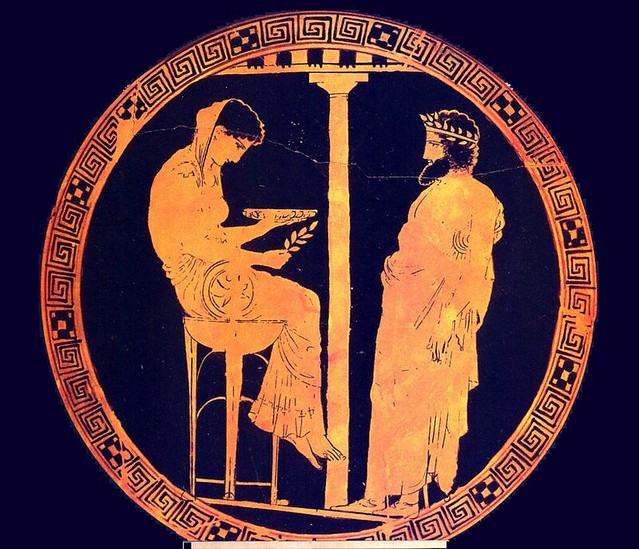
"The deepest core of life is poetry and symbol." - Dane Rudhyar
Like Symbol Reader on Facebook
-
-
Recent Posts
Categories
Archives
Meta










Tag Archives: Hermes
The Symbolism of the Dragon
“Dragons are subterranean, winged, smoke- and fire-breathing creatures, hybrid go-betweens in a magical bond between heaven and the underworld, where they guard secret treasures and reign over fires and concealed palaces.” A description found on Dragon Path on Mount Pilatus … Continue reading
Posted in Dragons
Tagged Agathis Daimon, alchemy, archetypes, Bilbo, C.G. Jung, Cadmus, Campbell, China, depth psychology, dragon, Dragons, drakaina, drakon, drakontes, etymology, fantasy, Gaia, goddess, gold, golden apples, Greek myth, guardian, Hermes, hero, Hesperides, James Hillman, Krakow, Ladon, Mercurius, Mysterium Coniunctionis, mythology, Nagas, Pilatus, ring, river, shadow, Shesha, Smaug, Soul, Stilbon, symbolism, symbols, The Red Book, treasure, Typhon, uoroboros, Vishnu, water, Yggdrasil
10 Comments
The Sibyls
“But she stood … black like an ancient citadel … as the words, which unrestrained now multiplied in her against her will, screamed and flew around her in incessant circles, while those that had returned home set darkly beneath her … Continue reading
Posted in The Sibyls
Tagged Aeneas, Aeneid, Apollo, archetypes, Black Madonna, black meteor, cave, Christianity, Cumae, Cybele, Delphi, Gaia, goddess, Great Mother, Greece, Hermes, Libyan Sibyl, Loreto, mythology, oracle, Pausanias, Pessinus, poetry, prophecy, Pythia, Sibylline Books, Sibyls, stone, symbolism, symbols, Tarquinius
7 Comments
Symbolism of the Cave
A well-known passage from Plato’s Republic describes how a group of people, chained to the wall of a deep cavern, spend their entire lives looking at the shadows dancing on the cave wall in front of them. The captives are oblivious to … Continue reading
Posted in cave
Tagged archetypes, C.G. Jung, cave, Cave of the Nymphs, death, Egypt, gnas, goddess, Hermes, incarnation, Plato, Porphyry, Power, rebirth, Soul, symbolism, symbols, tomb, transcendence, transformation, womb
7 Comments
Lyon
You may have heard of two magical triangles, one of black, the other of white magic. The origins of that legend are impossible to fathom. The white magic triangle is said to include Lyon, Prague and Turin, while the black … Continue reading
Between Hermes and Mnemosyne: Jung and Warburg
In the part of Homeric Hymn to Hermes, in which Hermes and Apollo exchange gifts, Hermes sings about the origins of the gods: “And the first of the gods that he commemorated with his song was Mnemosyne, Mother of Muses, … Continue reading
Posted in Aby Warburg
Tagged Aby Warburg, archetypes, C.G. Jung, Hermes, image, Kerenyi, Mnemosyne, Mnemosyne Atlas, psyche, Soul, symbolism, symbols
Leave a comment
Matar Kubileya (Cybele)
I. “Numinous sites of the preorganic life, which were experienced in participation mystique with the Great Mother, are mountain, cave, stone, pillar, and rock – including the childbearing rock – as throne, seat, dwelling place, and incarnation of the Great … Continue reading
Posted in Cybele
Tagged Anatolia, archetypes, beasts, Christianity, Cybele, Galli, goddess, Hermes, Kubileya, Kybele, Lion, lions, Magna Mater, meteor, mother goddess, mountains, naiskoi, Pessinus, Phrygia, Rome, symbolism, symbols, Virgin Mary
3 Comments
Reading The Red Book (39) – Seven Sermons to the Dead
We are still focusing on The Seven Sermons to the Dead, which are part of Scrutinies, the final section of The Red Book. In my previous posts, I looked at sermons one and two while this one is dedicated to the third sermon and … Continue reading
Posted in The Red Book by C.G. Jung
Tagged Abraxas, archetypes, C.G. Jung, darkness, depth psychology, devil, dualism, evil, Gnosticism, good, Hermes, Liber Novus, light, Mercurius, nature, opposites, rooster, samsara, Seven Sermons of the Dead, Soul, summum bonum, sun, symbolism, symbols, The Red Book, Time, wheel of time
6 Comments
Hermopolis: the City of Beautiful Renewal
“Let us praise Thoth, the exact plummet of the balance,from whom evil flees,who accepts him who avoids evil,the Vizier who gives judgement,who vanquishes crime,who recalls all that is forgotten,the remembrancer of time and eternity,who proclaims the hours of the night,whose … Continue reading
Posted in Hermes, Hermopolis
Tagged archetypes, being, creation, death, Egypt, Egyptian myth, Eye of Horus, hare, heart, Hermes, Hermetica, Hermopolis, ibis, Khmnu, life, lotus, maat, Moon, Ogdoad, oneness, Seshat, Set, symbolism, symbols, Thoth, Udjat, Wedjat
3 Comments
Reading The Red Book (33)
“One can certainly gain outer freedom through powerful actions, but one creates inner freedom only through the symbol.” C.G. Jung, The Red Book, Liber Secundus, chapter XX Chapter XX of Liber Secundus, the middle part of Jung’s Red Book, has … Continue reading
Posted in The Red Book by C.G. Jung
Tagged analytical psychology, archetype, C.G. Jung, Christ, Christianity, cross, Hermes, Jesus, Liber Novus, Liber Secundus, magic, Moses, Nehushtan, prisca theologia, psyche, serpens mercurialis, serpent, snake, Soul, symbolism, symbols, the way of the cross, transcendent function, unconscious, unity of opposites
3 Comments
Reading The Red Book (30)
“I feel the things that were and that will be. Behind the ordinary the eternal abyss yawns. The earth gives me back what it hid.” Liber Secundus, chapter XVII Chapter XVII of Liber Secundus, the second part of The Red … Continue reading
Posted in The Red Book by C.G. Jung
Tagged analytical psychology, Aquarius, archetypes, astrology, Atman, Atmavictu, Bollingen, breath, Carl Jung, Christ, dragon, gift, Hermes, Holy Grail, kabiri, lapis philosophorum, Leo, Liber Novus, Mercury, opposites, Parsifal, philosopher’s stone, pleroma, polarization, psyche, Saturn, shadow, Soul, stone, symbolism, symbols, talent, Telesphoros, The Red Book, Wagner
5 Comments

